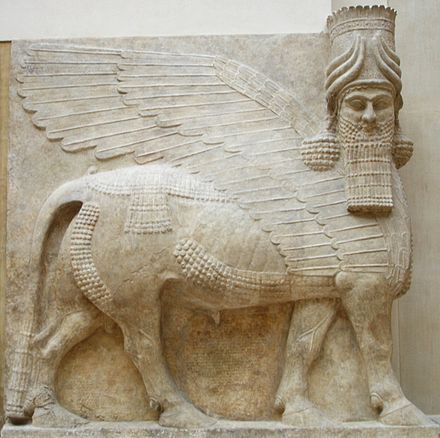_(2)_(cropped).jpg/440px-The_Parthenon_sculptures,_British_Museum_(14063376069)_(2)_(cropped).jpg)

.jpg/440px-Chinese_ritual_wine_server_(guang).jpg)
Las antigüedades son objetos de la antigüedad , especialmente de las civilizaciones del Mediterráneo : la antigüedad clásica de Grecia y Roma, la antigua Persia ( Irán ), el antiguo Egipto y otras culturas del antiguo Cercano Oriente . El término también puede abarcar artefactos de períodos anteriores, como el Mesolítico y otras civilizaciones de Asia y otros lugares. El fenómeno de dar un alto valor a los artefactos antiguos se encuentra en otras culturas, en particular China, donde los bronces rituales chinos , de entre tres y dos mil años de antigüedad, se han coleccionado e imitado ávidamente durante siglos, y las culturas precolombinas de Mesoamérica , donde en particular los artefactos de la civilización olmeca más temprana se encuentran enterrados nuevamente en sitios significativos de culturas posteriores hasta la conquista española. [1]
A una persona que estudia antigüedades, en lugar de simplemente coleccionarlas, a menudo se le llama anticuario .
La definición del término no siempre es precisa, y las definiciones institucionales como "Departamentos de Antigüedades" de los museos a menudo cubren períodos posteriores, pero en el uso normal, los objetos góticos , por ejemplo, no se describirían ahora como antigüedades, aunque en 1700 bien podrían haberlo sido, ya que la fecha límite para las antigüedades ha tendido a retroceder desde que la palabra se encontró por primera vez en inglés en 1513. Los artefactos no artísticos ahora tienen menos probabilidades de llamarse antigüedades que en períodos anteriores. Francis Bacon escribió en 1605: "Las antigüedades son historia desfigurada, o algunos restos de la historia que han escapado casualmente al naufragio del tiempo".
The art trade reflects modern usage of the term; Christie's "Department of Antiquities" covers objects "from the dawn of civilization to the Dark Ages, ranging from Western Europe to the Caspian Sea, embracing the cultures of Egypt, Greece, Rome and the Near East."[2] Bonhams use a similar definition: "...4000 B.C to the 12th Century A.D. Geographically they originate from Egypt, the Near East and Europe ..."[3] Official cut-off dates are often later, being unconcerned with precise divisions of art history, and using the term for all historical periods they wish to protect: in Jordan it is 1750,[4] in Hong Kong 1800, and so on.
The term is no longer much used in formal academic discussion, because of this imprecision. However, a recent attempt to standardise this and other terms has been carried out.[5] Most, but not all, antiquities have been recovered by archaeology. There is little or no overlap with antiques, which covers objects, not generally discovered as a result of archaeology, at most about three hundred years old, and usually far less.

The sense of antiquitates, the idea that a civilization could be recovered by a systematic exploration of its relics and material culture, in the sense used by Varro and reflected in Josephus' Antiquities of the Jews was lost during the Middle Ages, when ancient objects were collected with other appeals, the rarity or strangeness of their materials or simply because they were thought to be endowed with magical or miraculous powers.[6] Precious cameos and other antique carved gems might be preserved when incorporated into crowns and diadems and liturgical objects,[7] consular ivory diptychs by being used as gospel covers. Roman columns could be re-erected in churches.[8] sarcophagi could receive new occupants and cinerary urns could function as holy water stoups. Sculptural representations of the human form, feared and reviled as "idols" could be rehabilitated by reidentifying their subjects: the equestrian bronze Marcus Aurelius of the Campidoglio was respected as a representation of the Christian emperor Constantine, and in Pavia the Regisole acquired a civic role that preserved it. In Rome the Roman bronze Spinario was admired for itself by the guidebook writer Magister Gregorius. The classicism of the Carolingian Renaissance was in part inspired by appreciation of Late Antique manuscripts: the Utrecht Psalter attempts to recreate such a Late Antique original, both in its handwriting and its illustrations.[9]
Many museums hold these artifacts and keep them safe so that we have access to the knowledge they hold about the past. On September 2 the National Museum of Brazil was engulfed in flames. This event caused many artifacts to be lost forever.[10]
Trading of antiquities can be legal or illegal. The looting of archaeological sites or museums to supply the black market in antiquities poses a grave threat to the world's cultural heritage. Irreplaceable archaeological information may be lost.
{{cite web}}: Missing or empty |title= (help)[dead link]